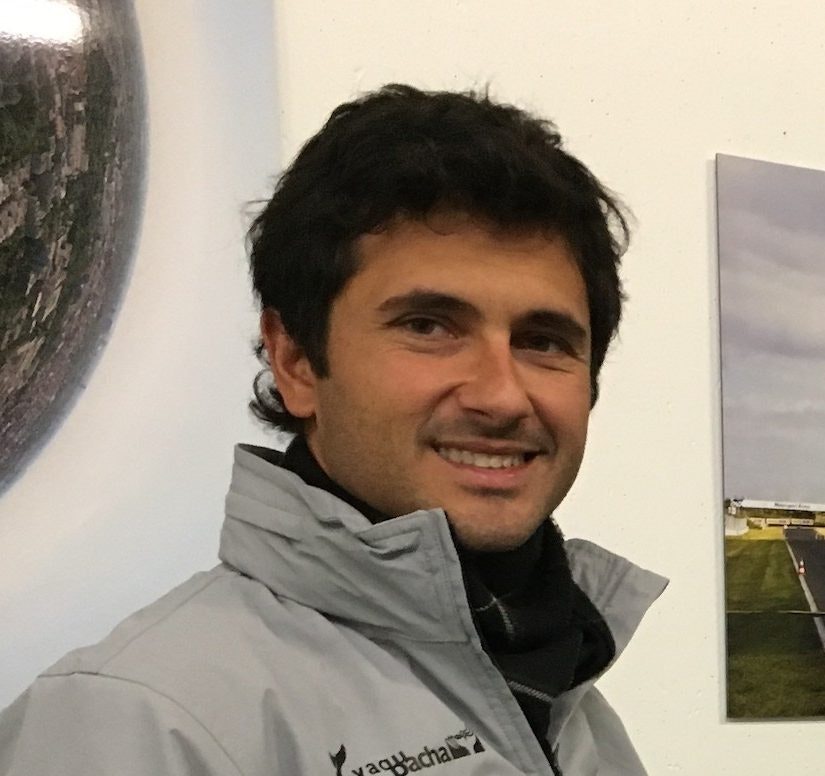Pedro grew up surfing the waves with Lahille’s bottlenose dolphins, also known for collaboratively catching mullet with artisanal fishers. Inspired by their coexistence, Pedro will reduce bycatch, raise awareness of this social species and strengthen the community’s connection to their marine environment.
UNIQUE DOLPHINS
The Lahille’s bottlenose dolphin is an endemic, small, coastal cetacean of the western South Atlantic found in two isolated populations in Argentina and southern Brazil-Uruguay. The Patos Lagoon Estuary, and adjacent coastal waters home to this species, are also considered one of the most productive fishing grounds in Brazil, resulting in high anthropogenic disturbances to marine wildlife. Over the last decade an average of 6 dolphins per year have died due to fishing – an unsustainable rate for a subspecies with fewer than 600 individuals remaining.
BATTLING BYCATCH
Bycatch – whereby non-target species are accidentally caught and perish – is responsible for at least 40% of dolphin mortalities in the area. Gillnet fisheries were banned in 2014 with the creation of a new no-take zone. Yet with people still dependent on fishing for their livelihoods, the lack of local consultation and insufficient enforcement has failed to reduce accidental entanglement. This will only worsen with economic hardships caused by COVID-19 and the current government’s aversion to addressing environmental crises.
BRINGING PEOPLE ON BOARD
In 2007 Pedro founded the NGO Kaosa to promote conservation, using this charismatic cetacean as a flagship species for healthy oceans. Pedro will encourage coexistence by documenting fishers’ perceptions and identifying opportunities for resolution; bridging the gap between communities, scientists and authorities to improve the effectiveness of the no-take zone. He will introduce participatory management, train local inspectors to deter illegal fishing and develop a communications strategy for wider public engagement.
Pedro and his team will:
- Curb dolphin bycatch around Patos Lagoon Estuary to reduce their mortality by 40% over 5 years.
- Investigate the ecological connectivity between populations of Lahille’s bottlenose dolphins to inform future conservation action.
- Evaluate the effectiveness of Patos Lagoon Estuary’s no-take zone and improve fisher compliance, balancing the needs of wildlife with people through participatory management.
- Train 50 champions to disseminate information and develop a citizen science app to raise public awareness.
Top facts:
- These dolphins have developed a unique foraging strategy, cooperating with artisanal fishers to catch mullet!
- Lahille’s bottlenose (Tursiops truncatus gephyreus) has only recently been classified as a distinct subspecies of dolphin.
- The IUCN have identified the Lahille’s bottlenose dolphin as a conservation priority due to its low abundance, imminence of decline, and potential for remedial action.
“By protecting Lahille’s bottlenose dolphins, we can protect the entire ecosystem and improve the livelihoods of coastal communities.” Pedro Fruet
PROJECT UPDATES
2024 CONTINUATION FUNDING
A holistic approach to Dolphin conservation in southern Brazil
Venezuela
£100,000 over 2 years
The endangered Lahille’s bottlenose dolphin has an estimated population of fewer than 600 individuals, facing significant threats from bycatch (the unintended capture of non-target fish and ocean life in commercial fishing gear) and pollution. In southern Brazil, the Patos Lagoon Estuary (PLE) and adjacent coastal waters are crucial areas for dolphin conservation, with around 4,000 traditional fishers depending on these waters for their livelihoods. Despite bans on harmful fishing practices, bycatch rates remain high here, threatening the small local dolphin population that remains.
With his 2021 Whitley Award, Pedro and his team at Kaosa successfully engaged community stakeholders, leading to a slight but important increase in dolphin survival rates around the PLE. Their project placed local fishers at the heart of the conservation process, recognising their invaluable knowledge of the marine ecosystem and working with them as essential allies in developing fishing practices to minimize incidental capture.
Building on past success, and aligning his approach with the recently formulated Conservation Management Plan for Lahille’s dolphins, Pedro and his team will use Continuation Funding to continue their collaboration with local communities, shifting attitudes around dolphin conservation and enhancing fisher engagement in the protection of this iconic species. By integrating science, art and traditional knowledge into training and awareness raising programmes across stakeholder groups, Pedro hopes to make conservation activities accessible and achievable, reaching at least 2,000 community members over the course of the project.
Additionally, he will conduct a comprehensive risk assessment for Lahille’s dolphins, as well as a Health Assessment Programme to better understand population viability and inform further timely conservation targets. Through community-inclusive action, Pedro hopes to reduce annual non-natural mortality of Lahille’s dolphins in the PLE by 40% over three years.






